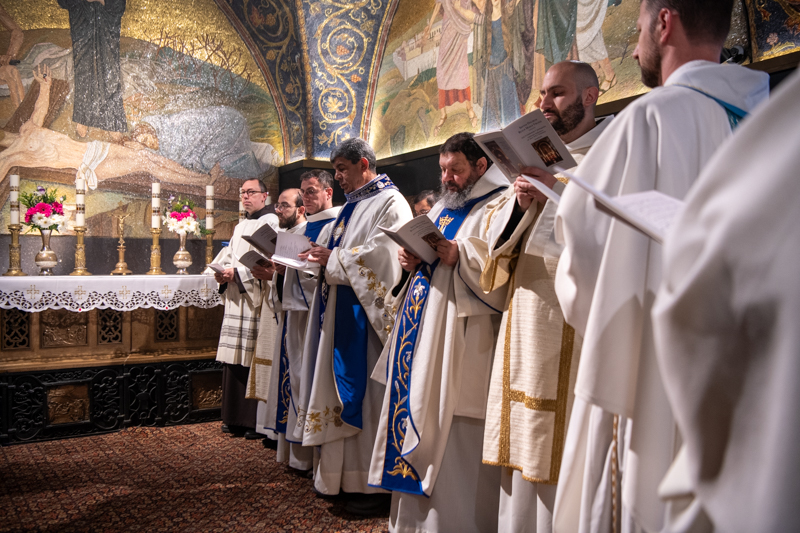
The celebration of the memory of Our Lady of the Seven Sorrows in Jerusalem marks the start of Holy Week.
Mass was celebrated on Friday 22 March in the Basilica of the Holy Sepulchre, on Calvary at the altar of Our Lady of Sorrows, which separates the Chapel which is the property of the Greek Orthodox from the Latin Chapel of the Crucifixion.

As tradition has it, it was the Vicar of the Custody, Fra Ibrahim Faltas, who presided over the celebration at the altar where there is the wooden bust of the Virgin Mary, donated to the Holy Sepulchre in 1778 by Maria the Pious, queen of Portugal. A sword pierces her chest, the representation of the prophesy of Simeon at the Temple, quoted in the Gospels on the childhood of Jesus: “He [Jesus] is here… a sign that will be contradicted; and you yourself a sword will pierce” (Luke 2,34-35).

The cult of Our Lady and her Seven Sorrows is a very ancient devotion which dates back to the 11th century: it was fixed on the Friday before Palm Sunday by Benedict XIII in 1727, and finally established on 15 September during the Second Vatican Council. However, here at the Holy Sepulchre, the pre-Council solemnity is also still alive, greatly beloved by pilgrims and faithful, remembered as the solemnity of the Septem Dolorum Beatae Mariae Virginis (Seven Sorrows of the Blessed Virgin Mary).
They form a sort of path of suffering, which the Mother of the Lord followed throughout her earthly life. The prophesy of Simeon about her son (Luke 2, 34-35), the flight with Joseph and the child to Egypt (Matthew, 2, 13-21), Jesus getting lost at twelve and then found at the temple (Luke, 2, 41-51), the encounter with Jesus on the Via Crucis (Luke 23, 27-31), her suffering at the foot of the cross (John 19, 25-27), the moment when she holds her dead son in her arms (Matthew, 27, 57-59) and lastly when she watches the descent of Jesus to the Sepulchre (John 19, 40-42).
The song of Stabat Mater, attributed to Jacopone da Todi, accompanied the liturgy and allowed those present and the concelebrants to enter the heart-breaking depth of today’s Mystery.

Fra Ibrahim Faltas, during his homily, wanted to underline the connection between Mary’s sorrow and the sorrow of all mothers. His thoughts go to the mothers of Gaza, whose suffering the Vicar has seen and known at first-hand, especially in Italy, where recently he has helped ill children from Gaza have treatment in children’s hospitals: “The seven sorrows of Mary are similar to the painful story of many mothers who today are forced to flee to find a safe refuge for their children, under bombings, where everything around them has been destroyed: mothers who do not have food for their starving children, or who look for their small children amid the rubble.”
“It is necessary,” Fra Ibrahim continues, “to keep looking at Mary, who teaches us to contemplate the crucifix, the great mystery of God’s love for us. Our Lady of the Sorrows teaches us that we have to enter the mystery of Christ’s passion: Mary joined the suffering on the Cross not only with her physical presence, but above all for the love of her Son. Today’s celebration teaches us a lesson of true and deep compassion, Mary suffers for Jesus but she also suffers with Him and the Passion of Christ is to take part in all human sorrow.”
Silvia Giuliano
